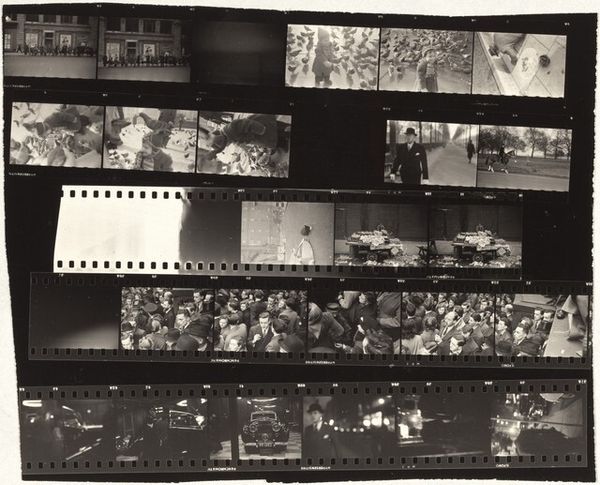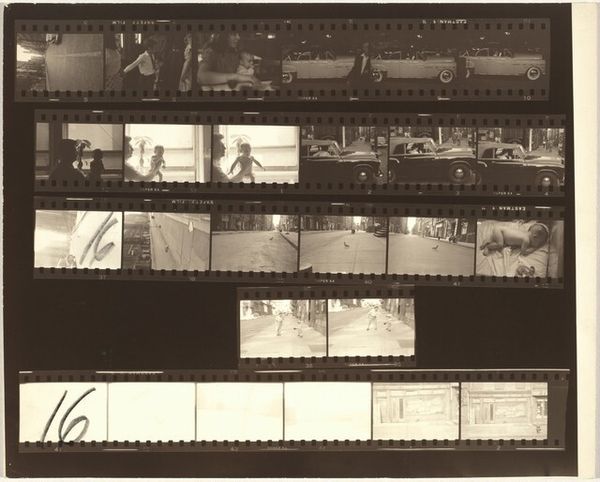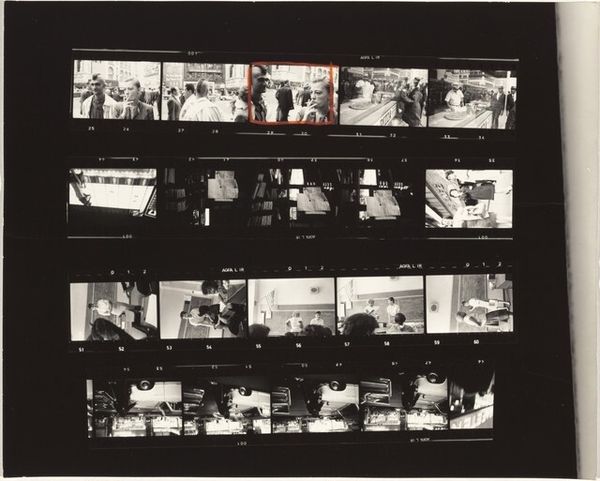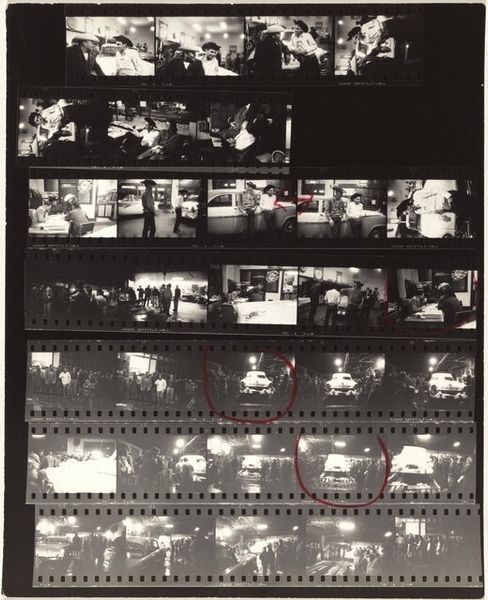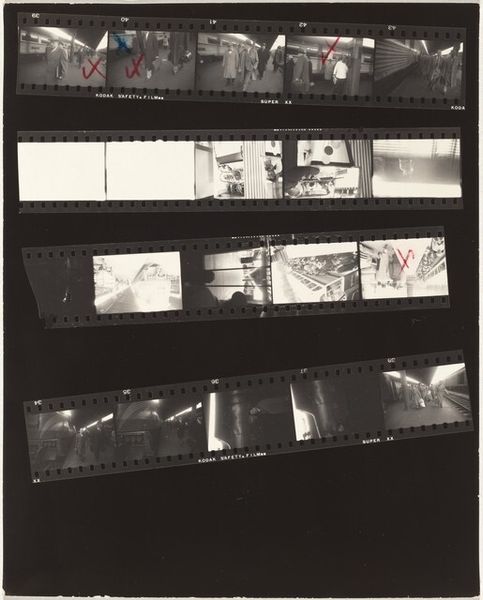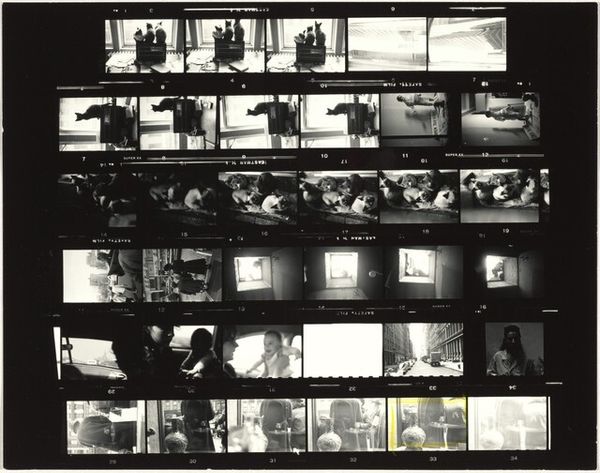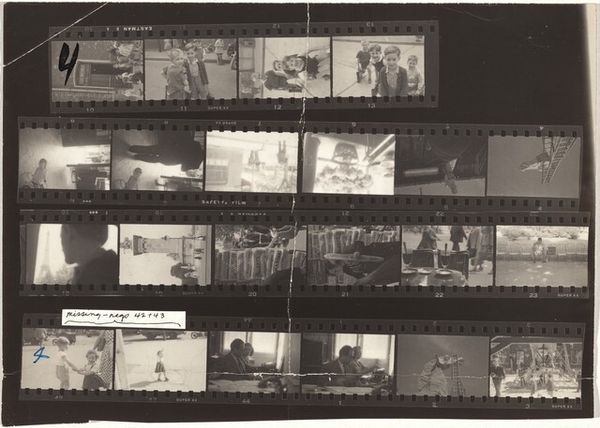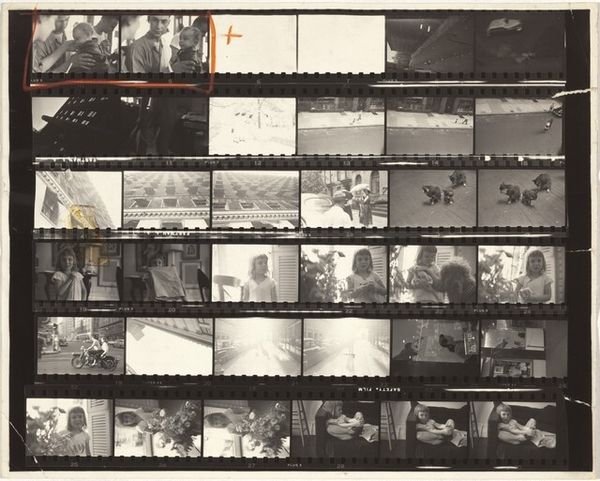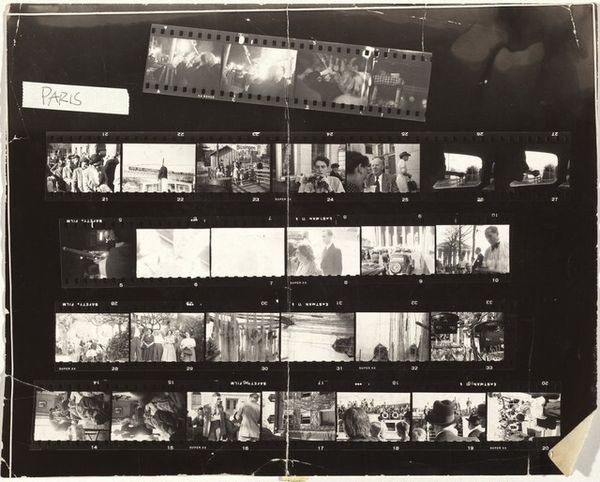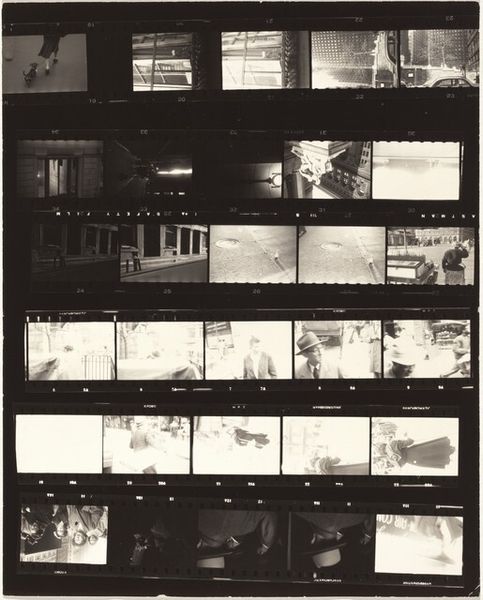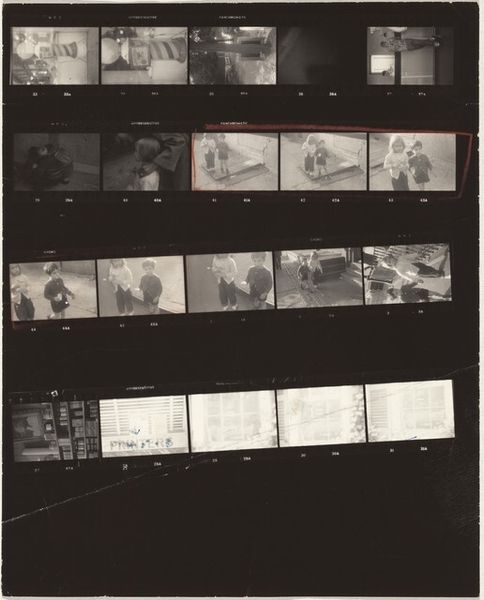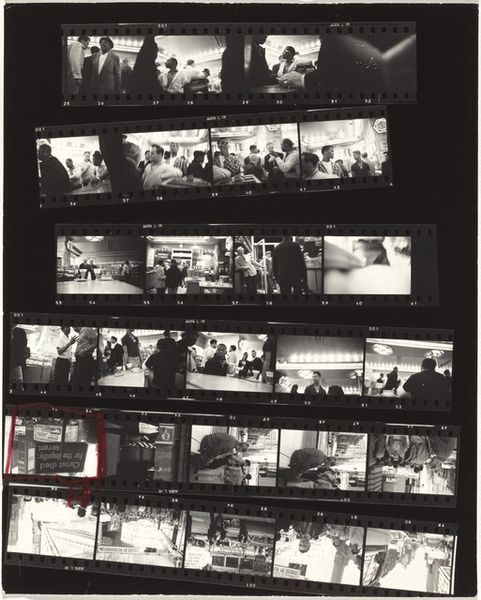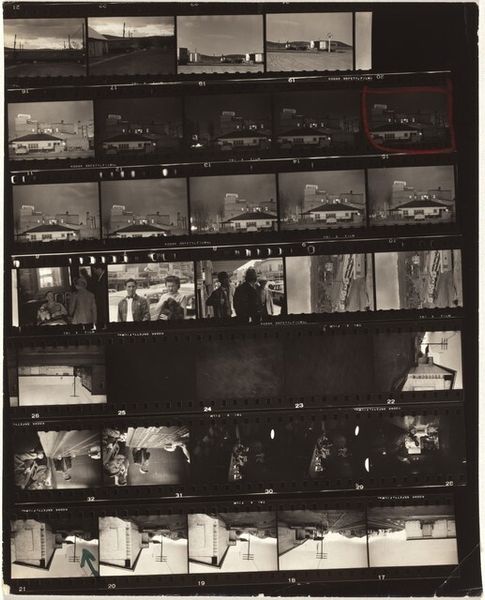
Dimensions: sheet: 20.2 x 25.1 cm (7 15/16 x 9 7/8 in.)
Copyright: National Gallery of Art: CC0 1.0
Editor: So, here we have Robert Frank's "Women for 'Vogue'--rejects X," made between 1952 and 1953, a gelatin-silver print showcasing rejected film strips. There's a raw, almost scrapbook-like feel to this. It's less about the polished image, more about the process. What does this work say about the societal role of photography at the time? Curator: That "scrapbook-like feel" is key, because Frank is showing us the behind-the-scenes of image making for a magazine as iconic as "Vogue". He presents the rejected frames; what the institution deemed unfit for public consumption. What kind of image were they aiming for at Vogue, and what does the presence of "rejects" suggest about those aims? Editor: I suppose "Vogue," even then, projected an idealized image of women and of society, generally, while these rejects likely showed something more real, or imperfect? Curator: Exactly. It reflects the pressure to construct an aspirational reality through images, not to reflect a more everyday existence. The explicit rejection marks challenge the viewer to consider not just what *is* shown, but also the immense selection process and political influences around what isn’t. And what effect that political environment has on our self-image. Can you spot any recurring visual motifs among the rejects? Editor: Well, some strips seem to show ordinary street scenes, candid shots, nothing especially glamorous... almost documentary style. Curator: Precisely. The contrast highlights how even in fashion photography, with its staged artifice, street photography and candid moments challenged that aspiration of perfect image control. Frank's piece suggests tension between art, commerce, and social documentation. How do you think museums today contend with showcasing work that explicitly critiques institutions? Editor: It's fascinating! Museums showing works like this, is, in a way, acknowledging their own potential biases and engaging in self-reflection, which might lead to deeper conversations about the role of art and visual media in shaping cultural values. Curator: Precisely, this forces an open acknowledgement of how artistic value gets made through those choices and filters within larger systems.
Comments
No comments
Be the first to comment and join the conversation on the ultimate creative platform.
